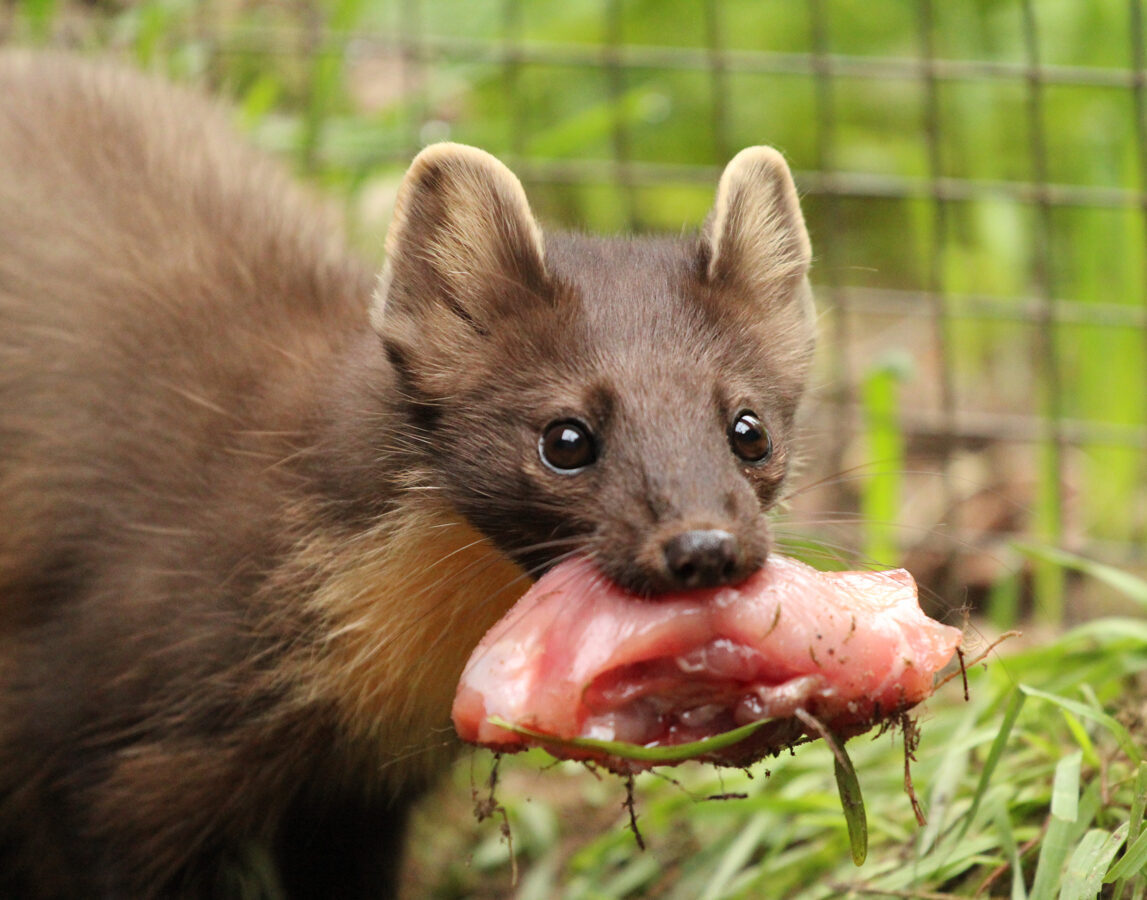Where do they live? As the name of European pine marten in Latvian (Forest marten) signifies, the species live in forests. Since the term “ forest” is a rather wide concept, it should be noted that the species will always give preference to older mixed forests and mixed fir - broadleaf tree forest stands, forest edges bordering on marshlands, small forest meadows, burned areas. They avoid open and monotonous landscapes.
How do they live? Solitary animals, European pine martens mark and protect their territory. In spring, prior to the mating period, martens find one partner and develop a monogamous couple with them. However, shortly after the wedding, their marriage breaks down and the ex-spouses continue to lead separate lives. Only mothers care for the cubs. Martens tend to establish their future children’s rooms (and dens in general) in tree hollows, nests of different larger birds, squirrel dens. They can also build their den themselves, or, the laziest and bravest ones – under the eaves and in the sheds of remote buildings.
Martens, like certain other animals, have what is called latent or postponed pregnancy. Namely, the development of the embryo does not start immediately after fertilisation, it starts almost ten months later, approximately four weeks before the birth of the cubs. European pine martens are skilful climbers and love living in the trees, therefore, they are a threat to squirrels and other inhabitants of trees.
What do they eat? The menu of the European pine marten includes mouse-like rodents, birds and their eggs, squirrels, amphibians, reptiles, insects, raspberries, bilberries and other berries, certain species of mushrooms, plant seeds, nuts, as well as carrion. Furthermore, martens gladly consume the cells and larvae in bee and wasp colonies, as well as honey. Due to this reason, beekeepers do not favour martens...
Did you know?
- Martens are very aggressive and strong predators that tend to kill more
prey than they are capable of consuming. They are not afraid to attack animals
that are bigger than themselves.
- The sharp claws of martens are partially retractable, like cat claws. Due to this, martens are able to skilfully and safely climb trees.
- Martens are shamanic and totem animals with many legends and fairy tales about them. For instance, in ancient cultures and Indian tribes martens were considered saintly animals that bring luck and protection, they were considered to be the link of trees with Heaven and Earth, they were associated with magic, wisdom of the forest, speed, sharp wit, curiosity and trickery, as well as body health and the ability to determine the boundaries of everything, to discern a real friendship from a false one.

